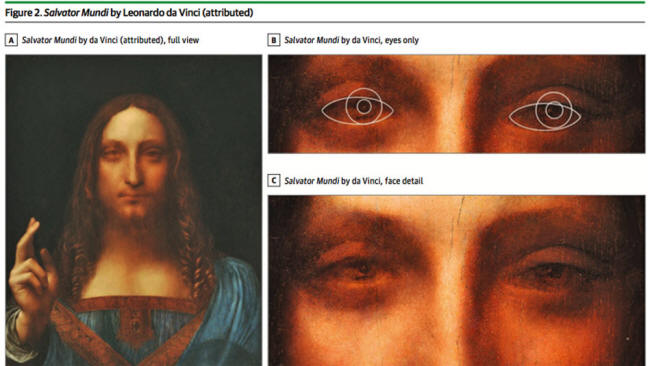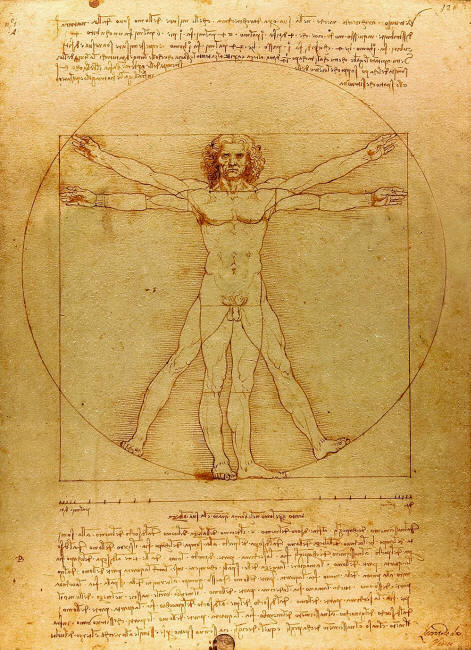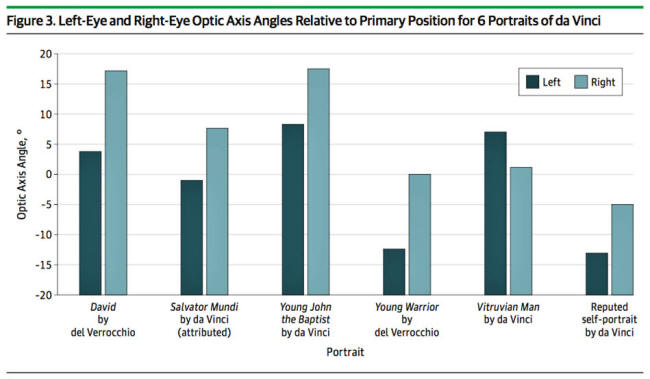|
from BigThink Website
that Da Vicni shared a disorder
with Picasso and
Rembrandt...
An analysis of Renaissance artwork suggests that Leonardo Da Vinci may have had exotropia, a kind of strabismus which causes one of the eyes to be turned outwards, and that the condition may have helped him as a painter by allowing him to switch between three-dimensional and two-dimensional vision.
He wouldn't have been alone, other famous painters who are speculated to have had the condition include Rembrandt and Picasso.
by Leonardo da Vinci
created c. 1480–1490
By looking at the
paintings, drawings, and statues and applying the same techniques
optometrists use on patients, Tyler was able to conclude that the
eyes of the men depicted were misaligned.
"What happens in some people is when they're only using one eye... they develop other cues besides traditional depth perception to understand where things are in space, looking at color and shadow in a way that most of us who use both eyes at a time don't really appreciate."
Dr. Robbins agrees that,
if the artworks analyzed accurately depict Da Vinci, then he
probably had exotropia.
Quite the superpower for an artist.
A graph showing the difference in where each eye is focused for each painting, drawing, and statue used in the study. The larger the difference, the more pronounced
the exotropia is in the image.
What Dr. Tyler is suggesting is that the tendency of people who have exotropia to rely on using one eye to see the world and thereby lose some depth perception allowed Da Vinci to understand better how the three-dimensional objects in the world could be translated into a two-dimensional image on a canvas.
This
could account for some of Da Vinci's skill in depicting shadow and
subtle changes in color, since he would have relied on these details
to understand the world.
There are reasons to be cautious anytime we make claims about people who are long dead.
In this case, we have the bonus problem that we aren't 100 percent sure that the images used are supposed to look like Da Vinci. That is the major caveat of the idea.
All of the images used as evidence of his condition are assumed to look like him.
While some of the images, like the David by Andrea del Verrocchio, are generally agreed to be based on Leonardo the other pictures are claimed to be reflective of him based only on his statement that,
Tyler also argues that the portraits he claims are based on Da Vinci share similarities with the images generally accepted to be portraits of him; including similar hair and facial features.
This
lends weight to the idea that the artist incorporated his own traits
into his artwork, including his vision problem.
It does, however, give us a literal example
of how people who look at the world differently can use that vantage
point to their advantage to create things we all can appreciate.
|




